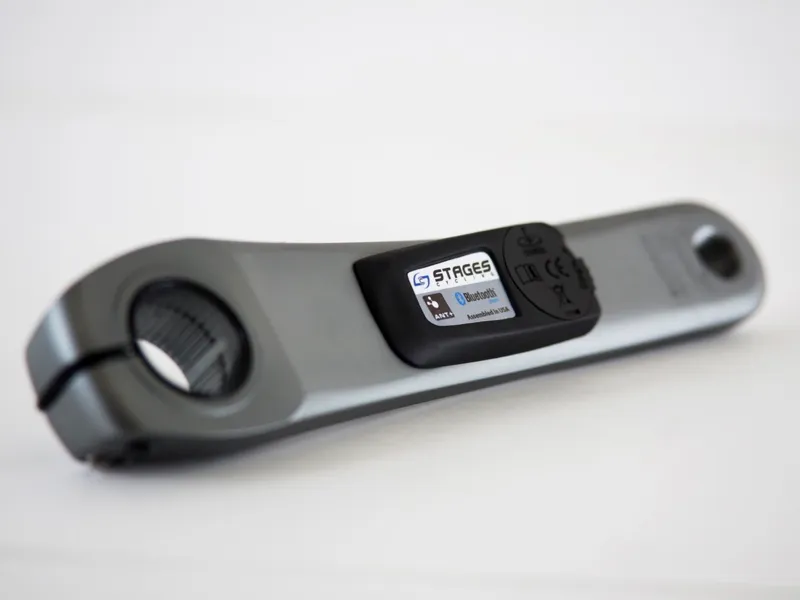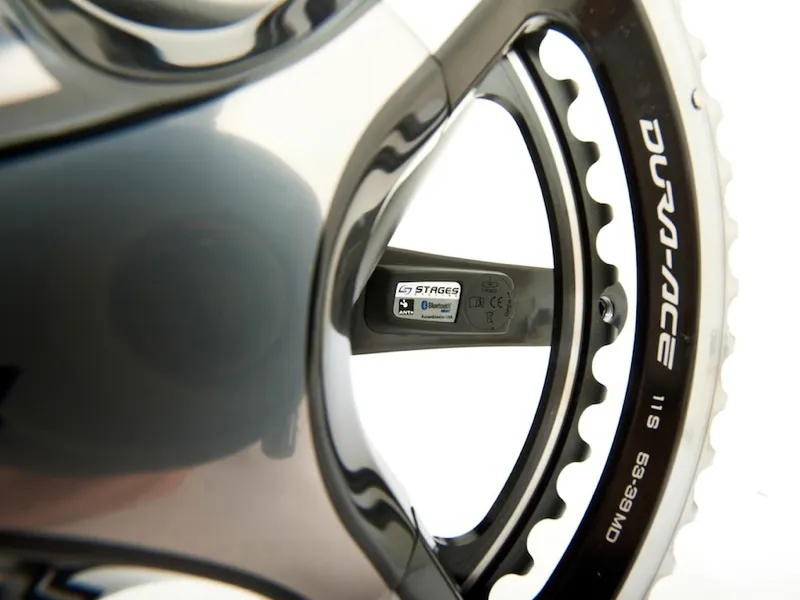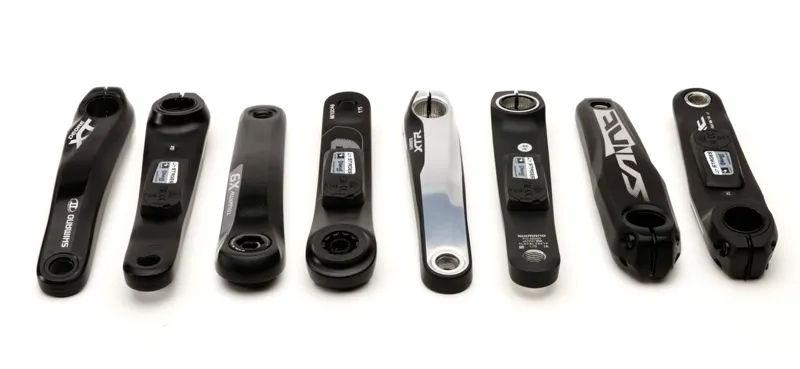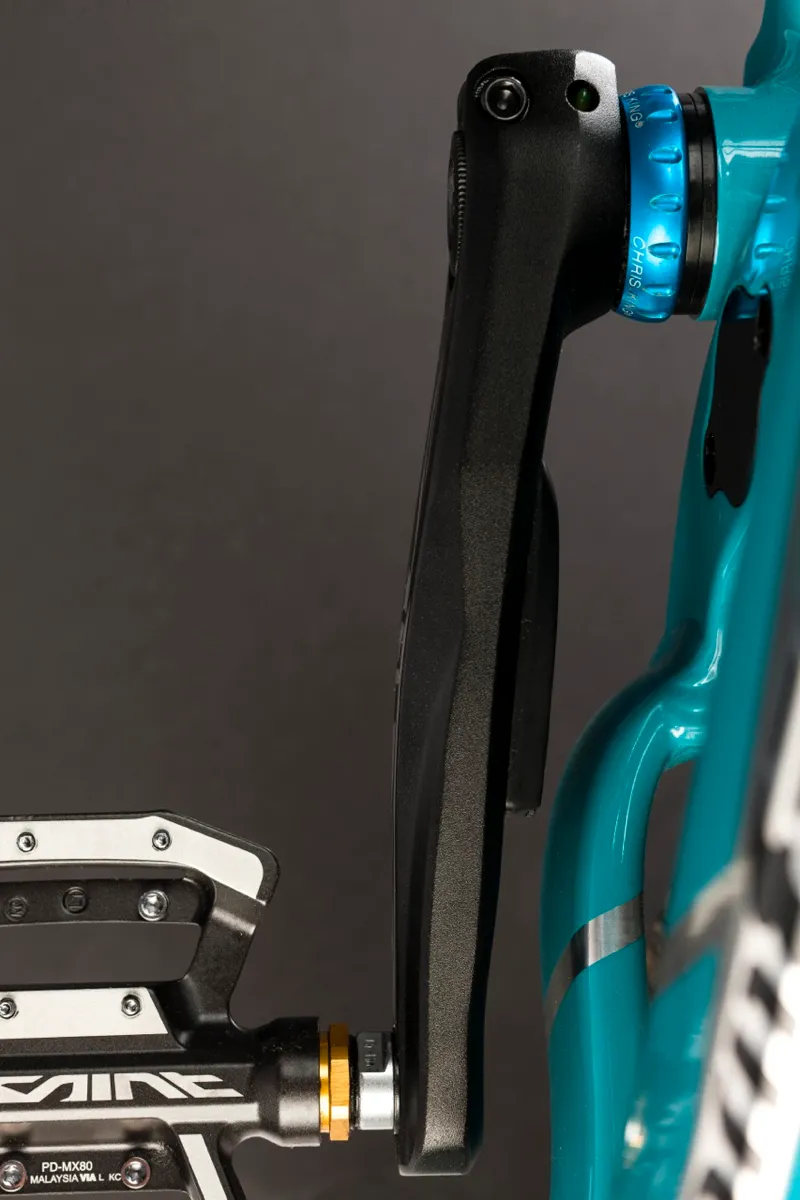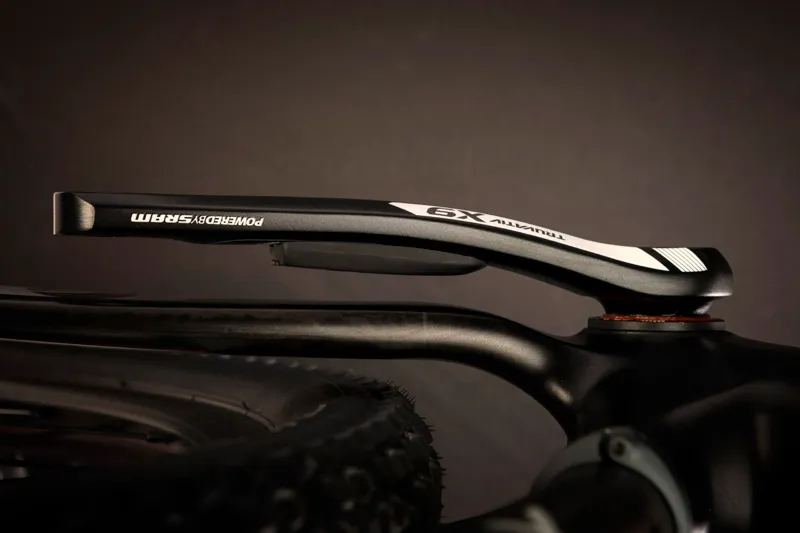Following the brand’s debut at Interbike, Stages Cycling is beginning to ship its crank-arm power meters this week with free one-month premium subscriptions to Strava and TrainingPeaks. The units weigh less than 20g, are available only on metal left crank arms, and retail for between $699 and $999 (£507 and £633). BikeRadar spent two full days with the engineers behind Stages last week to learn more about the technology.
First things first: yes, the Stages Power meter works. Strain gages on the inside of the left crank arm measure beam deflection, which is translated into watts and transmitted to a head unit (not included) via ANT or Bluetooth Smart.
Strain gages are how other direct-power-measurement tools on the market work, whether within a hub-based system like PowerTap or on a spider-based system like Quarq or SRM.
The science behind the Stages system is complex (more on that below), but the user interface is simple: you put the crank on, pair it with a head unit and go.
Before Stages, riders who wanted a power meter had to choose between price or low weight and wheel selection. PowerTap is the cheapest, starting at $899 for the Pro hub (that you still have to build into a wheel), but adds roughly 100g and locks you into that rear wheel. Quarq and SRM, on the other hand, allow freedom to switch wheels and minimize the weight penalty, but the least expensive option starts with the just-introduced $1,595/£1,014 Quarq RIKEN. (This excludes power-calculator units like iBike that do not directly measure power output.) Most of the spider options are well into the $2,000/£1,272 range.
Stages forces a different type of choice — power or carbon cranks — as carbon fiber is kryptonite for the Stages power system. While aluminum cranks bend at a consistent rate, carbon fiber’s mixed structure of resin and thread does not. So, there are no Stages units on carbon cranks, which eliminates the top cranksets from SRAM, Campagnolo and FSA.
For now, there are left-arm cranks and cranksets from Shimano, SRAM and Cannondale available on Stages’ website and through select dealers. Stages does not ship to the UK, but the company may begin doing so next year.
The Stages system also requires faith that your left-leg power is consistently representative of your total power.
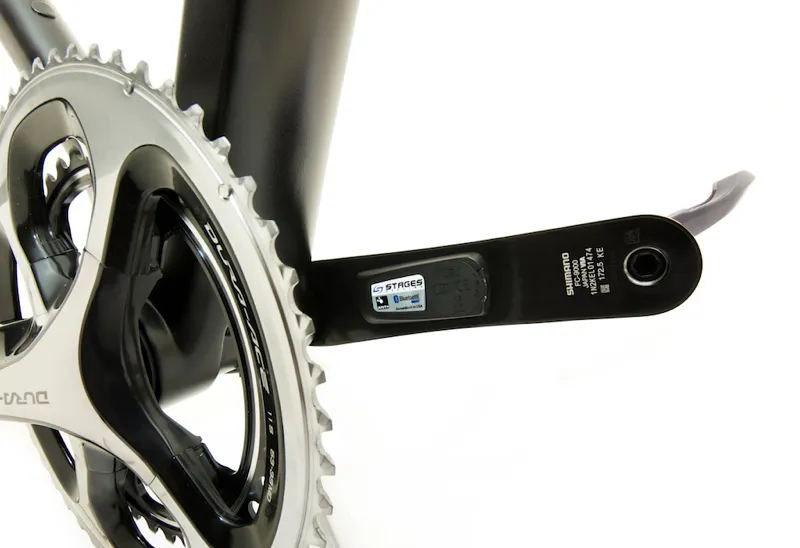
The Stages Power meter weighs less than 20g
The people behind Stages
Stages Cycling is brand new, but the people behind the brand are by no means new to power meters or cycling. The core engineering team has worked together since 1994 at Schwinn. Three years ago they formed Foundation Fitness, Stages' parent company, to produce stationary bikes with power meters. The massive American gym chains 24 Hour Fitness and Lifetime Fitness buy the Boulder company’s Free Motion stationary bikes exclusively.
Besides being used individually by gym members, the bikes are used in spinning classes where instructors tailor workouts by each rider’s functional power threshold and related training zones.
“There are millions of people riding indoor bikes,” said Stages Cycling senior vice president Pat Warner. “At Lifetime and 24HR Fitness, they are doing FTP tests and training to their power zones. They don’t know that they know more than most racers out there.”
Together with company founder and president Jim Liggett, vice president of product development Doug Crawford, and engineers Andy Lull and Eric Golesh, the small company boasts a wealth of engineering experience.
“Between us, we have 225 patents. This is not our first product,” Warner said, adding that a main goal of the Stages meter was simplicity. “If we subtract complexity, we can add technology. Sometimes simple is the most elegant engineering.”
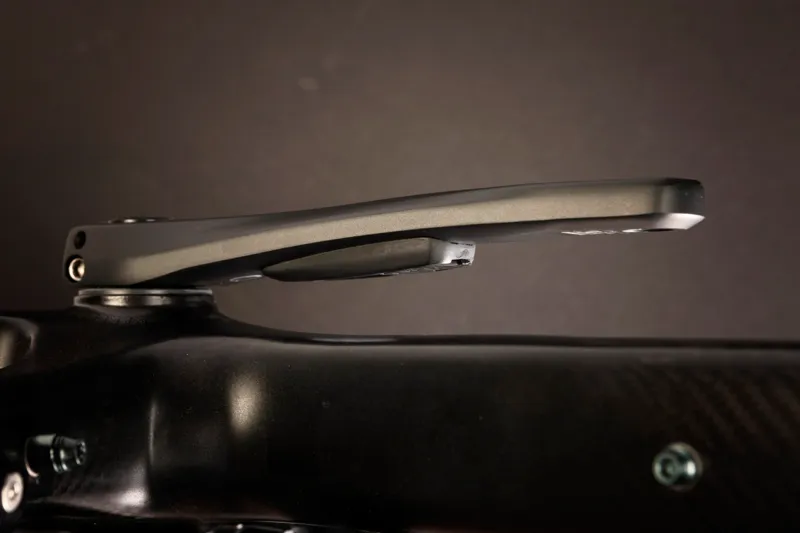
The thin meter should fit 90 percent of road bikes on the market, Stages says
The science behind Stages
So when you want to measure power on a bike, exactly what do you measure? Lull, the lead engineer on the Stages Power meter, said that power is the time rate at which work is done, and work is force multiplied by distance. In real-world context, work is a ride up a mountain, and power is how fast you do it.
Here is the formula the Stages Power meter uses:
P=2x((Fx9.9xl)x(Rx0.1047))
- P = power/watts
- F = force (kilograms)
- L = crank length in meters
- R = rpm
- 9.8 = gravitational constant
- 0.1047 = conversion for rpm to radians per sec
- 2 = multiplier to double left leg power
The strain gages on the left crank measure force in compression and tension, and each meter is calibrated to weight of the crank.
Accelerometers measure cadence, and also figure in to when power is calculated. (We tried to ‘trick’ the power meter by pressing down hard on the left crank with the brakes clamped on — 0 watts.)
The unit records 64 position and force measurements per second, and the data output sent to the head unit is done four times a second, per the ANT standard. How much data shows up on the display is determined by the head unit — typically once a second.

Metal cranks from SRAM, Shimano and now Cannondale (not shown) are sold by Stages and select retailers with the power meter
Temperature’s effect on the metal’s deflection, Warner says, is negated with an onboard thermometer and a running calculation.
Run time is a claimed 200 hours with a CR2032 battery, a common model you can pick up at most grocery stores for a dollar. Accuracy is a claimed /- 2 % when measured at 100 watts at 90rpm. Finally, running firmware changes can be made via Bluetooth, Warner said.
The Stages Power meter is plug-and-play with ANT head units like a Garmin. It will also work with smartphones that have Bluetooth 4.0, like the iPhone 4s and 5 or the Samsung Galaxy 3, but these will require apps like Strava to adopt the 4.0 protocol. Stages expects that to happen in the coming weeks.
Stages has no plans to produce its own head unit.
Comparing Stages to other power meters
A head-to-head comparison of power meters isn’t simple, unfortunately. For starters, the connection between head units and the meter can be imperfect: data packets can be dropped in transmission, and the rate of transmission versus rate of data capture and/or display do not necessarily match. For example, pairing two Garmin head units to the same power meter on the same ride can produce slightly different results. Also, calibration and temperature can affect certain power meters’ readings.
Warner rode with three power meters on his bike for 16 months.
“I tested two competitors’ meters on a 32 f/0 c day without zeroing either, and the difference was much as 100 watts,” Warner said, adding that the Stages meter was right in the middle. “The point is not that others are bad, but that you have to use these tools properly.”
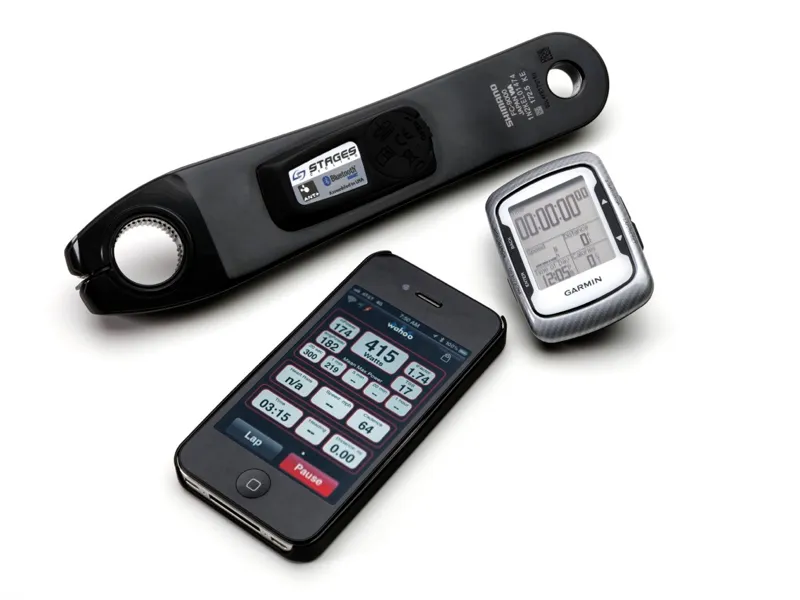
Transmitting data on ANT and Bluetooth 4.0, the Stages Power meter is compatible with head units like the Garmin 500 or smartphones like the iPhone
When properly calibrated, Warner said he found the Stages, SRM, Quarq and PowerTap power meters to track very closely, with each having their own quirks.
In our thus-far-limited experience, we found the Stages Power meter to work well. For reference, we tested it side-by-side with a PowerTap. On one two-hour ride, the total average watts varied between the two by 14 watts, and the max watts varied by 100. Which is right? Without a lab to test, it’s impossible to know.
We did notice on one occasion that the readout on our Edge 800 was '0' for a second or more after we started pedaling. Whether this was due to the Edge not picking up a signal or the Stages meter not transmitting it, we simply don't know.
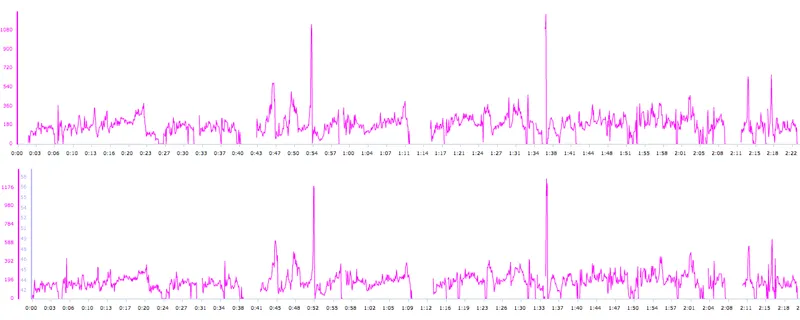
Here are two TrainingPeaks files from the same BikeRadar test ride. The top is what a PowerTap hub and head unit recorded. The bottom is what a Stages Power meter and Garmin 800 recorded. While we cannot claim that the PowerTap file is perfect, it does provide a point of reference
One point of concern with the Stages meter is the fact that is measures only left-leg power, and multiplies it by two for total power. During our visits with Stages, the company brought in physiologist and pro cycling coach Neal Henderson, who said less than 5 percent of the people he’s tested have a noticeable discrepancy in leg power.
The main thing, the Stages staff argue, is for the data to be consistent and reliable. "The question is," Warner said, "can you train to it?”
BikeRadar will be training with a Dura-Ace Stages Power meter over the coming weeks. Look for a full review on that soon.
The bottom line on price and models
Stages offers cranks in 165-180mm lengths in all major bottom bracket standards for all cycling disciplines. There are no carbon fiber options. Stages estimates that 90 percent of the road bikes on the market are compatible with the Stages meter, which adds about 1cm of width to the inside of the left crank. Each meter comes with a one-year warranty, and a longer warranty can be purchased for $105-$135, depending on the model.
Here are the individual prices.
Cannondale BB30 Products:
- Cannondale Hollowgram SI SL (pre-2012, road/mtn power meter only), $949
- Cannondale Hollowgram SI SL2 road/mtn power meter, $999
- Cannondale Hollowgram SI SL2 road, complete crank, $1,399
- Cannondale Hollowgram SI HG (3D forged) road/mtn power meter only, $799
Shimano Products:
- Shimano Dura-Ace 9000, $899 power meter; $1,349 complete crank
- Shimano Dura-Ace 7900, $899 power meter
- Shimano Ultegra, $799 power meter; $1,099 complete crank
- Shimano 105, $699 power meter
- Shimano Dura-Ace Track, $899 power meter
- Shimano XTR, $899 power meter
- Shimano XT, $799 power meter
- Shimano Saint, $899 power meter
- Shimano DXR, $899 power meter
SRAM Products:
- SRAM X9 GXP, $699 power meter; $899 complete crank (Compatible with X7, X9, X0, XX [166 Q model], XX1 and many Truvativ models)
- SRAM X9 BB30, $699 power meter; $949 complete crank
- SRAM Rival OCT GXP, $699 power meter; $899 complete crank SRAM (Rival left crank is compatible with Red, Force, Rival and Apex)

